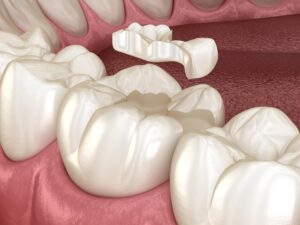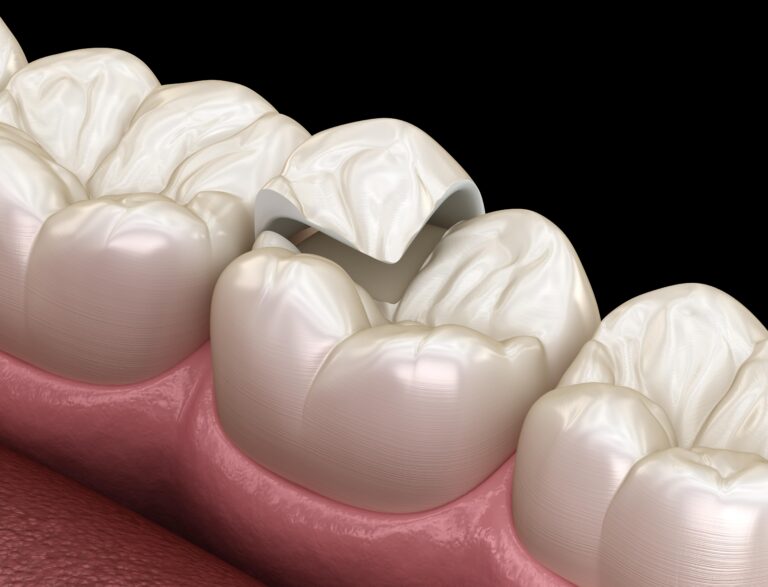Your teeth are important. Not only do they help you eat and speak, but they also play a role in your overall health. That’s why it’s so important to take care of them, and to see a dentist regularly. When it comes to dental procedures, there are a lot of different options out there. Inlays and onlays are one type of procedure that can be used to restore damaged teeth. But what exactly are they? Keep reading to find out the ins and outs of inlays and onlays.
What are inlays and onlays, and how do they differ from traditional dental fillings?

Inlays and onlays are two restorative treatments that are commonly used in modern dentistry to repair damage to the teeth caused by cavities. Dental inlays are restorations that are placed within the cusps (bumps) of a tooth to restore its shape, strength, and function. Inlays are typically used when the damage to the tooth is too extensive for a traditional filling but not extensive enough to warrant a dental crown. Dental onlays are similar to inlays, but they cover a larger portion of the tooth, such as one or more of the cusps. Onlays are typically used when the damage to the tooth is more extensive and a traditional filling or inlay would not be sufficient.
Inlays and onlays are also sometimes known as indirect fillings. An indirect filling is different from a traditional filling in that it is made outside of the mouth and then bonded to the tooth. Dental inlays and onlays can be made from a variety of materials, including gold, porcelain, or composite resin. The material chosen for the inlay depends on the location of the tooth and the extent of the damage.
In comparison, traditional fillings are fabricated directly inside the mouth using a softer material. Additionally, fillings tend to last only several years at most when compared to the longevity offered by inlays and onlays, which can often remain undisturbed for over a decade due to their increased strength and durability.
Here’s a table summarizing the differences between dental inlays, onlays, traditional fillings, and dental crowns:
| Inlays | Onlays | Traditional Fillings | Crowns | |
| Size and Placement | Smaller, placed within the cusps of a tooth | Larger, covers a larger portion of the tooth | Small, placed within a cavity in the tooth | Larger, covers the entire tooth |
| Materials Used | Gold, porcelain, or composite resin | Gold, porcelain, or composite resin | Composite resin or amalgam | Porcelain, metal, or ceramic |
| Procedure | Two appointments, removal of decay and impression taken during first appointment, inlay placed during second appointment | Two appointments, removal of decay and impression taken during first appointment, onlay placed during second appointment | One appointment, removal of decay and filling material placed in cavity | Two appointments, tooth reshaped and impression taken during first appointment, crown placed during second appointment |
| Advantages | Durable, long-lasting, less tooth structure removal compared to crowns | Durable, long-lasting, less tooth structure removal compared to crowns, covers more extensive damage than inlays | Quick procedure, less expensive compared to inlays, onlays, and crowns | Strong, covers extensive damage, long-lasting |
| Disadvantages | Multiple appointments required, more expensive than traditional fillings | Multiple appointments required, more expensive than traditional fillings | Not as durable as inlays, onlays, and crowns | More tooth structure removal, more expensive compared to inlays, onlays, and traditional fillings |
It’s important to note that the best treatment option for a damaged or decayed tooth depends on the extent of the damage and the location of the tooth. A dentist can help determine which treatment option is best for your individual needs.
The process of getting an inlay or onlay placed
The process of getting an inlay or onlay placed begins with a comprehensive exam. During this exam, your dentist examines the damage or decay to your tooth and decides if an inlay or onlay is the right treatment for you.
The procedure for placing a dental inlay or onlay typically involves two appointments. During the first appointment, the dentist will remove any decay from the tooth and take an impression of the tooth. The impression is used to create a custom-made inlay or onlay that fits perfectly within the tooth. The inlay or onlay is then placed during the second appointment. The whole process is designed to effectively and efficiently restore teeth with moderate damage back to their original health and function.
How to care for your new inlay or onlay
Once you have an inlay or onlay placed, it is important to know how to properly care for your new restoration. To get the most out of your new restoration, make sure to brush twice daily and floss daily to reduce plaque buildup. Additionally, avoid using your teeth as tools; opening packages with your mouth, or chewing on objects, as this can cause damage to your teeth and/or your new restoration. Regular dental checkups (once every 6 months) are crucial for continued oral health. With good care, your inlay or onlay should last for many years—check with your dentist about any extra steps you should take to ensure longevity and better health.
In Conclusion
Inlays and onlays are a great way to restore your teeth after cavities or other damage. They are made of durable materials that will last for many years, and they can be color-matched to your natural tooth color. The process is simple and straightforward, and you can return to your normal activities as soon as the procedure is finished. With proper care, your inlay or onlay will keep your smile looking its best for years to come. Thanks for reading!



